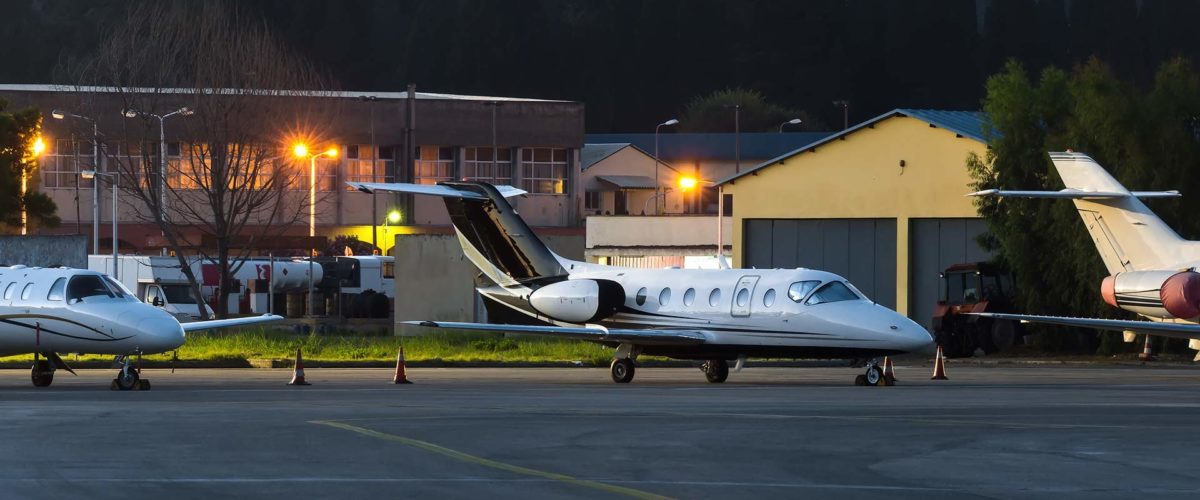The business aviation sector is on the rise again. Despite Brexit and Covid throwing challenges at the industry, some companies have seen an increase in demand. With this increase in momentum comes an even greater need, and opportunity, to progress sustainable options.
As an alternative to commercial flights, charter business flights are now seen as a safer option and one which enables more personal connectivity. It is no longer a fundamentally luxury service, but now attracts a broader demographic. The current impact on airline networks, affecting route choice and convenience, has increased the gap between business aviation and scheduled operations.
Business Aviation Market on the Rise!
Overall, scheduled commercial flights have decreased by around 45%, compared to only about 1% for business aviation. So far in 2022 the business aviation sector in the UK is seeing a surge. Small and mid-size cabin aircraft have seen a particularly quick increase. Luxaviation UK reported that business was down initially at the start of the pandemic, but then in 3Q21 rose to the highest since they began.
The increase in demand for charter flights and the ability to offer an alternative to commercial flights has meant that some operators have been able to increase their ticket price. This is not to take advantage of passengers, but to cover the costs of running a charter flight operation and staying in business. However, with higher ticket prices they will need to offer what the new customers expect – sustainable services. Passengers are willing to pay more but want to see a move to sustainable operations.
Reducing Aviation’s Carbon Footprint
Aviation produces around 2.4% of global CO2 emissions. This figure is expected to grow in the future as the demand for air travel increases throughout the world. Reducing aviation’s carbon footprint will require a mix of technological improvements and changes across the sector. Businesses will need to stay ahead of the game in order to be successful. This will require us to focus on developing new technologies that can help reduce emissions, as well as implementing policies and practices that promote sustainability and uptake of the new advances.
The drive to sustainability was a hot topic at the BBGA 2022 annual conference, with a panel on fixed-wing electrical/hybrid-electrical and eVTOL (Electric vertical take-off and landing) for business aviation. Panellists discussed the benefits of these technologies for business aviation and the steps that need to be taken to make them more widespread.
The Future of Sustainable Aviation
The aviation industry is making great strides in sustainable technology, with a range of new options coming to market or in development. Airbus and CFM have announced plans to test a hydrogen-fueled engine, project ZEROe, that would produce zero carbon emissions during flight.
GE Aviation has partnered with NASA to develop hybrid electric engines which will be much more fuel-efficient than traditional engines. In addition, other new engine designs are being explored, such as the open-fan concept to reduce fuel consumption, and therefore emissions. The fast progress of eVTOL aircraft is likely to lead to a considerable growth in their use in the business aviation sector in the next few years.
While there are still some technological challenges to overcome, the pace of development in these areas is accelerating rapidly. The FlyZero project is a cross industry initiative which was started in 2021 with the goal of assessing the design challenges, manufacturing demands, operational requirements, and market opportunities of potential zero-carbon emission aircraft concepts. This project is funded by the UK’s Department for Business, Energy, and Industrial Strategy, and it is hoped that it will provide valuable insights into the future of aerospace technology.
Already we are seeing the uptake of sustainable aviation fuels (SAF), contrail mitigation systems, and cleaning systems that help make jet engines run more efficiently. In addition, GE Digital’s Fuel Insight software – which analyses flight data and identifies fuel savings during the flight – has begun to be adopted and is gaining momentum. There are many other avenues too beyond sustainable engines and fuel savings already available, such as carbon offset programmes, electric ramp vehicles, and sustainable parts sourcing.
The Challenges and Considerations of Sustainable Options
As demand for more sustainable options increases, it’s important to consider the challenges and deterrents that may prevent uptake. BBGA is advocating the need to raise awareness of the current options, particularly to alleviate the hesitancy and uneasiness in using sustainable aviation fuels. SAFs are becoming more popular, but more work needs to be done in order to increase understanding and acceptance of these alternative fuels. Higher initial costs are part of the challenge and SAFs are still often expensive, as is replacing or even retrofitting old aircraft with new, more environmentally friendly options.
It is also important to consider how the aircraft will be operated, serviced and supported when making the switch to a more environmentally friendly option. A mixed fleet can often increase operational and maintenance costs. Additionally, there may be flow-on effects for MROs, with changes to the type of aircraft, schedules and facilities, as well as re-training and up-skilling requirements. Despite these challenges, increased demand provides an opportunity to change and expand fleets to meet demand with better alternatives, and to attract more clients by being a leading sustainable operator.
Conclusion
Now is the time to consider how the industry will evolve and reach for the opportunities. By increasing awareness and promoting education, we can help move the industry toward a more sustainable future. As business aviation looks to meet growing demand and reduce its environmental impact, the industry will need to continue adapting and innovating to stay ahead of the curve. This will require a focus on collaboration across sectors, as well as on developing new technologies and policies that promote sustainability. With the right mix of solutions, the aviation industry can meet the challenges of tomorrow (and today!) and thrive.

